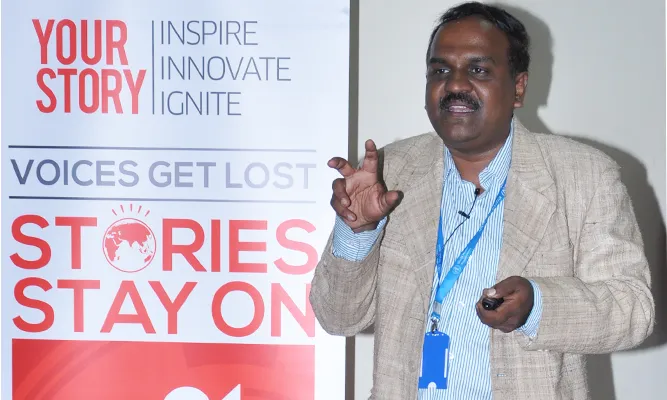Roti, kapda, polio vaccine and mobile phone: how WHO aims to keep India polio free
India proudly declared in 2011 that polio was eradicated – but protecting these gains will require more advocacy, awareness and innovations in mobile communications.
This was a key message delivered in an inspiring keynote address by Dr B.P. Subramanya, Surveillance Medical Officer at the World Health Organisation (WHO), at the YourStory Healthcare Meetup for the Vodafone Developer Program’s ‘Innovations through Collaboration’ held last evening in Bangalore.
In 2009, India accounted for 50% of the world’s polio cases – but in June 2011 the last case was reported, recalls Subramanya. “Today, we can have stronger surveillance systems than ever before thanks to emails, SMS and other kinds of mobile communications,” he observed. The last reported polio case in Karnataka was in 2007, but there are still high risk areas across India where migrant labour populations live in tents. India has 257,000 migrant sites, and about 18,000 have been tracked in Karnataka – these can be potential flashpoints for polio, said Subramanya.“Even migrant workers with no homes have a mobile phone – that is the opportunity for health campaigns to track them and educate them,” he urged. Just a decade ago, entire districts of Bihar had no mobile phones, but now mobile networks are accessible across the country.

India’s population is increasing at the rate of 26 million newborns each year, and mother & child tracking systems (MCTS) are needed to monitor vaccine schedules to ensure polio does not strike children. Mobiles can be used in advocacy, tracking, monitoring and community engagement for vaccine campaigns. They can also be used to track vaccine stock and quality, advised Subramanya. These include tools like RFID chips and warehouse management solutions. Tools like pedometers and wearable devices help track other health indicators also, such as the number of steps walked daily. India has a ‘twin burden’ of communicable diseases in lower income families and non-communicable ailments in higher-income families, such as diabetes and obe

sity.“Indian families are willing to pay for mobile phones even before they have toilets. They need to be aware that these phones can also be used to enquire about polio vaccination and provide tracking information,” he stated. The WHO and the Indian government have signed a cooperation strategy for 2012-2017 to improve universal health coverage. This covers regulation, pharmaceuticals and stewardship. The smartphone ecosystem is also creating new platforms for health entrepreneurs. “I could share certain kinds of data with my colleagues only every few months during periodic review meetings. Now I can share data instantaneously with WhatsApp,” said Subramanya.
He concluded his talk by urging more public education about polio and other diseases via mobile ads, more systematic research on mobile impacts in healthcare, and better cross-pollination of the polio eradication experience with other disease treatments.
Stay tuned for more Vodafone Developer Program`s Innovation Through Collaboration YourStory meetups.







